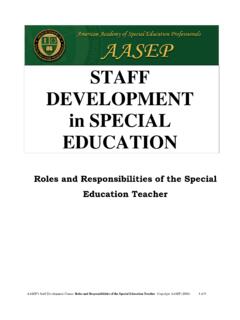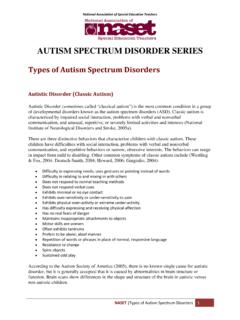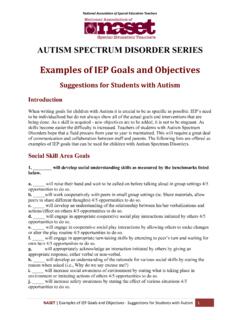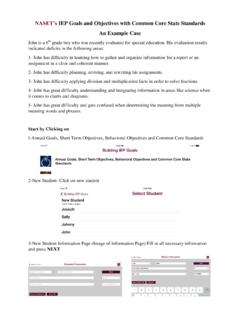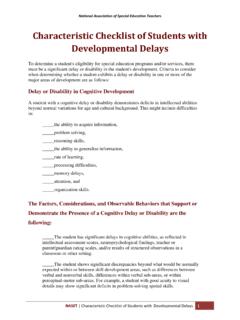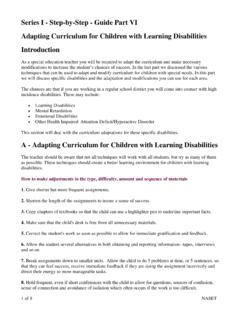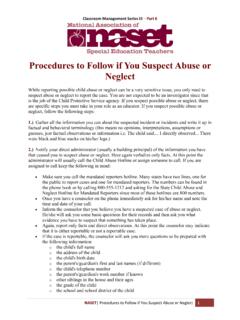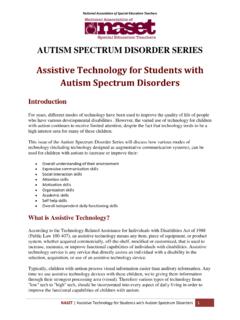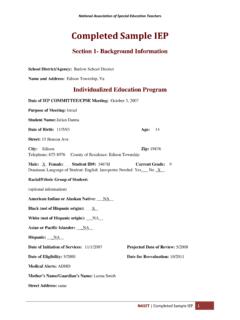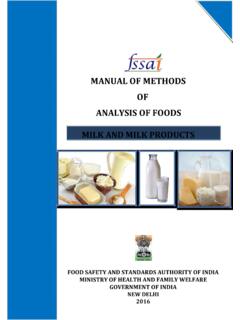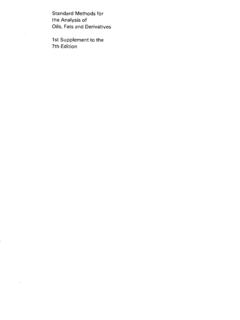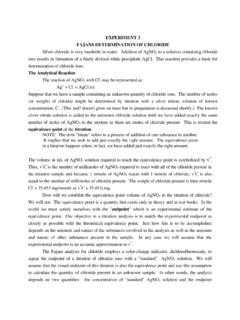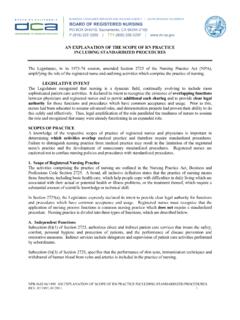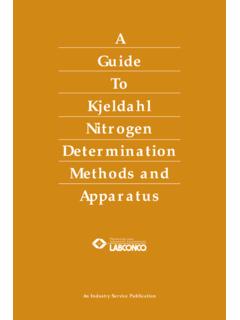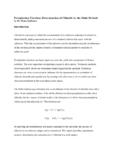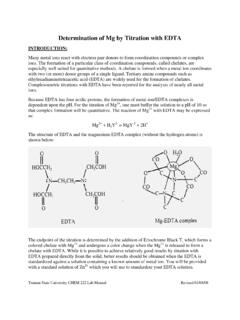Transcription of Eligibility Determination for Specific Learning Disabilities
1 National Association of Special Education Teachers NASET | Eligibility Determination for Specific Learning Disabilities 1 NASET LD Report #4 Eligibility Determination for Specific Learning Disabilities A Step by Step Process Step I-Becoming Familiar with the Characteristics of Students with Specific Learning Disabilities There is no one sign that shows a person has a Learning disability. Experts look for a noticeable difference between how well a student does in school and how well he or she could do, given his or her intelligence or ability. There are also certain clues that may mean a student has a Learning disability.
2 Most relate to elementary school tasks, because Learning Disabilities tend to be identified in elementary school. A student probably won't show all of these signs, or even most of them. However, if a student shows a number of these problems, then parent/guardians and the teacher should consider the possibility that the student has a Learning disability. When a student has a Learning disability, he or she: may have trouble Learning the alphabet, rhyming words, or connecting letters to their sounds may make many mistakes when reading aloud, and repeat and pause often may not understand what he or she reads may have real trouble with spelling may have very messy handwriting or hold a pencil awkwardly may struggle to express ideas in writing may learn language late and have a limited vocabulary may have trouble remembering the sounds that letters make or hearing slight differences between words may have trouble understanding jokes, comic strips.
3 And sarcasm may have trouble following directions may mispronounce words or use a wrong word that sounds similar may have trouble organizing what he or she wants to say or not be able to think of the word he or she needs for writing or conversation may not follow the social rules of conversation, such as taking turns and may stand too close to the listener may confuse math symbols and misread numbers may not be able to retell a story in order (what happened first, second, third) may not know where to begin a task or how to go on from there If a student has unexpected problems Learning to read, write, listen, speak, or do math, then teachers and parent/guardians may want to investigate more.
4 The same is true if the student is struggling to do any one of these skills. The student may need to be evaluated to see if he or she has a Learning disability. National Association of Special Education Teachers NASET | Eligibility Determination for Specific Learning Disabilities 2 Step II-Determining the Procedures and Assessment Measures to be Used If a student is suspected of having a Specific Learning disability, the following evaluation should be considered: An observation by a team member other than the student s general education teacher of the student s academic performance in a general classroom setting.
5 Or in the case of a student less than school age or out of school, an observation by a team member conducted in an age-appropriate environment A developmental history, if needed An assessment of intellectual ability Other assessments of the characteristics of Learning Disabilities if the student exhibits impairments in any one or more of the following areas: o cognition, fine motor, perceptual motor, communication, social or emotional, and perception or memory. These assessments shall be completed by specialists knowledgeable in the Specific characteristics being assessed: o A review of cumulative records, previous individualized education programs or individualized family service plans and teacher collected work samples o If deemed necessary, a medical statement or health assessment statement indicating whether there are any physical factors that may be affecting the student s educational performance Assessments to determine the impact of the suspected disability.
6 O On the student s educational performance when the student is at the age of Eligibility for kindergarten through age 21 o On the student s developmental progress when the student is age three through the age of Eligibility for kindergarten Additional evaluations or assessments that are necessary to identify the student s educational needs. At least one observation is required as part of the evaluation for determining a Specific Learning Disability. Minimal observation requirements include: o At least one team member other than the student's general education teacher shall observe the student's academic performance in the general classroom setting.
7 In the case of a student less than school age or out of school, a team member shall observe the student in an environment appropriate for a student of that age. o The relevant behavior noted during the observation of the student; and, the relationship of that behavior to the student s academic functioning Documentation that the student's Learning problems are not primarily due to: lack of appropriate instruction in reading and math limited English proficiency visual, hearing, or motor impairment Mental Retardation Emotional Disturbance environmental, cultural, or economic disadvantage motivational factors situational traumas National Association of Special Education Teachers NASET | Eligibility Determination for Specific Learning Disabilities 3 Step III- Determination of Eligibility for a Diagnosis of a Specific Learning Disability In general.
8 States use two different methods to determine whether a student meets the Eligibility criteria as a student with a Specific Learning Disability under IDEA. We present a synopsis of these two options for an IEP Committee to consider. OPTION 1 In order to identify and be determined as eligible for special education services as a student with a Specific Learning Disability, the IEP Committee shall document that the following standards have been met. Based on the results of the assessment: 1. The student demonstrates a continued lack of progress when provided with appropriate instruction in the suspected area of disability.
9 2. Documented evidence exists which indicates that effective general education interventions and strategies have been attempted over a reasonable period of time. 3. The determining factor for identification of a Learning disability is not due to a lack of appropriate instruction in reading and math. 4. Evidence exists that the student does not achieve commensurate with his/her age and ability in one or more of the following areas: listening comprehension, oral expression, basic reading skills, reading comprehension, written expression, mathematics calculation, and/or mathematics reasoning.
10 5. There is a severe discrepancy between educational performance and predicted achievement that is based on the best measure of cognitive ability (This is an OPTIONAL CONSIDERATION under IDEA 2004). Cognitive ability/achievement discrepancies should be used cautiously because a Learning disability can exist when a numerical discrepancy does not. Such comparisons may assist in the diagnostic process. Careful diagnosticians examine all information and recognize developmental factors, including age and academic experience, in making a Determination as to the value of such discrepancies.
